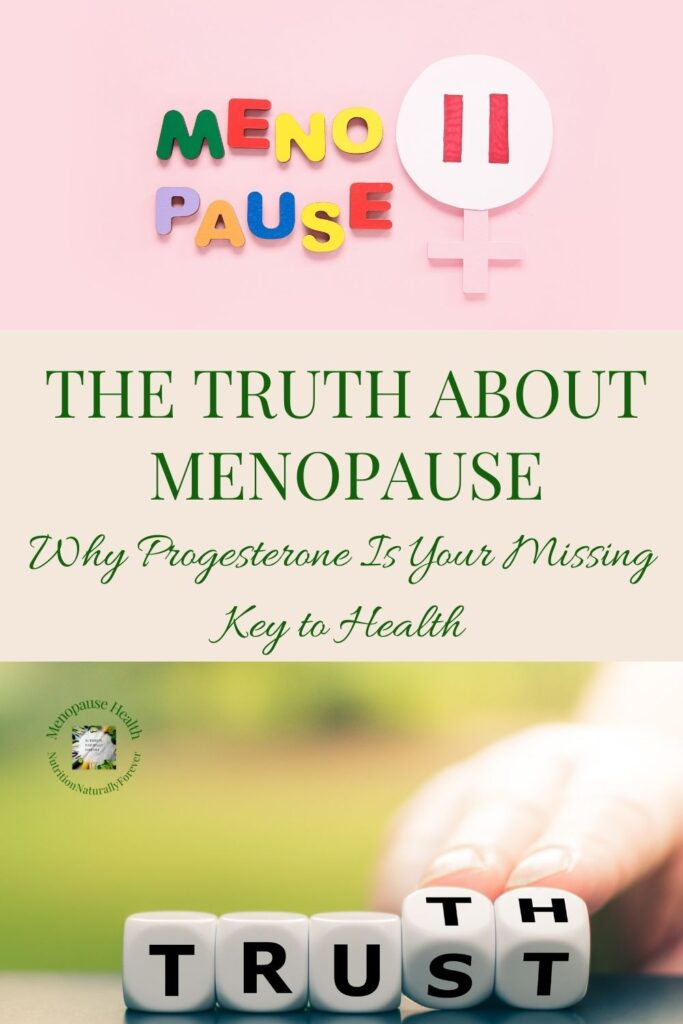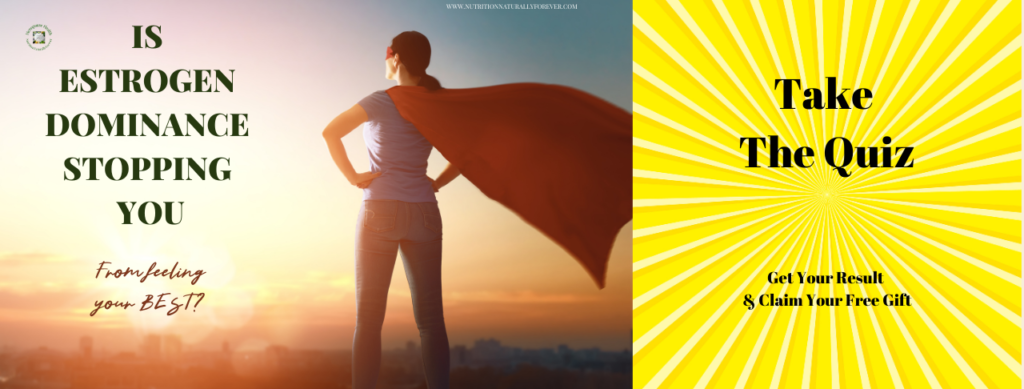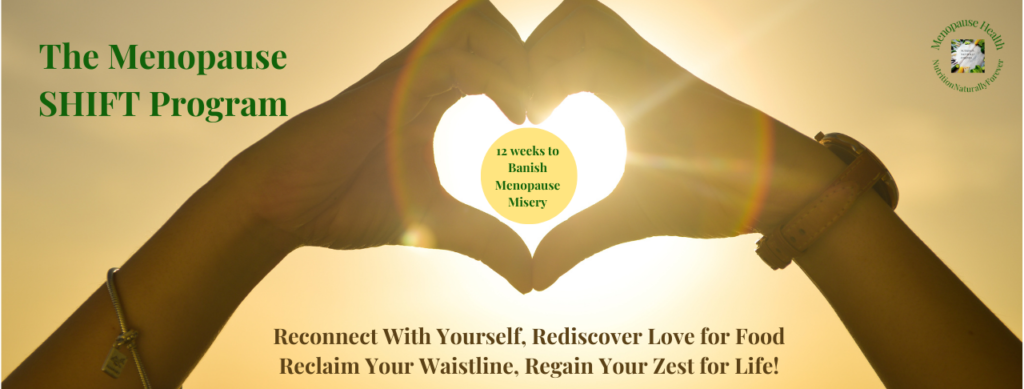
Progesterone vs Estrogen Differences For Menopause.
Menopause marks the end of the reproductive phase in a woman’s life, a natural transition that not all women are fortunate enough to experience.
I view menopause as a time of transformation, a time to evaluate life so far and intentionally plan what you want the rest of your life.
Here are some questions you can ask yourself;
- What needs to change and why?
- How can you look after yourself better?
- How can you feel joy?
- What are your hopes, dreams and desires?
- How can you make these a reality?
I certainly don’t want to diminish the misery many women experience through menopausal symptoms as they navigate a pathway through menopause, still, I do want you to keep an open mind about menopause being a natural transition and how, with knowledge and understanding of hormonal imbalances and how they impact your symptoms of menopause that you can take control of your menopause health holistically and find your path back to joy and vitality.
You can’t get away from the topic of estrogen, everyone is talking about it, but what about progesterone?
Why is progesterone often overlooked and how can it be the heroine for women on the pathway through menopause and beyond?
In this post, I will look at Progesterone vs Estrogen for menopause health and well-being.
The Role of Estrogen in a Woman’s Life
The body is run by hormones.
The communication of hormones and receptors controls every function in the body.
Each hormone plays a vital role.
Estrogen is a steroid hormone associated with the female reproductive organs. It is responsible for developing female sexual characteristics such as breast tissue and the distribution of body fat to the thighs hips and stomach.
In the uterus, estrogen helps proliferate endometrial cells in the follicular phase of the menstrual cycle, this is the thickening of the endometrial lining in preparation for pregnancy.
During the luteal phase of the cycle, progesterone has the starring role and this continues during pregnancy.
If there is no pregnancy then both hormones fade, the uterus is shed and the cycle continues.
Estrogen has long been linked to bone health due to its role in regulating bone resorption, slowing the activity of osteoclasts, the cells that break down bone.
However, post-menopause, relying solely on estrogen supplementation for bone health can be misleading, especially when addressing the broader hormonal picture.
While estrogen can slow bone loss, it does not actively build new bone.
Progesterone, however, plays a crucial role in stimulating osteoblasts, the bone-building cells, which is essential for maintaining bone density.
In cases of estrogen dominance—where estrogen levels are high relative to progesterone—the hormonal imbalance can hinder bone remodelling and weaken bones over time.
If osteoporosis is a female disease and estrogen can protect against it, why isn’t it common for men to suffer from osteoporosis? The answer to this is a complicated combination of hormones and lifestyle but these are the questions we should be investigating.
Beyond hormones, bone health is also supported by a balanced diet rich in calcium, vitamin D, magnesium, and regular weight-bearing exercise.
By addressing estrogen dominance and supporting progesterone, women can protect their bones naturally, without relying on synthetic estrogen supplementation, which can perpetuate hormonal imbalances and other health risks.
A balanced approach to bone health, rooted in hormonal harmony and lifestyle practices, offers a safer, more sustainable path post-menopause.

70% of women have estrogen dominance without even realising it.
Estrogen dominance may just be too much estrogen compared to progesterone levels. Blood tests won’t give you the whole picture as estrogen is stored and released from fat tissue as well as the ovaries.
High levels of estrogen may cause the following common adverse effects: breast tenderness, nausea, vomiting, bloating, stomach cramps, headaches, weight gain, hyperpigmentation of the skin, hair loss, vaginal itching, abnormal uterine bleeding, also known as breakthrough bleeding, and anaphylaxis.
More severe side effects of estrogen include hypertension, cerebrovascular accident, myocardial infarction, venous thromboembolism (blood clots), pulmonary embolism, exacerbation of epilepsy, irritability, exacerbation of asthma, galactorrhea and nipple discharge, hypocalcemia, gallbladder disease, hepatic hemangioma and adenoma, pancreatitis, breast hypertrophy, endometrial hyperplasia, polycystic ovary syndrome, vaginitis, vulvovaginal candidiasis (intravaginal preparations), enlargement of uterine fibroids, and risk of cervical cancer, ovarian cancer and breast cancer.
It is natural for the body to reduce the reproductive hormones as we shift from the Mother Archetype to the Wise Woman and Crone.
In nature it is only humans and some whales that experience menopause, all other creatures die once their reproductive years come to an end. This shows the value that we provide to our species even once we are no longer responsible for repopulation.
Menopause is a biological design and not a stage of life that needs to be medicated to be prevented.
Through the menopause transition progesterone slowly declines whereas estrogen can fluctuate wildly being many times higher than needed one minute and plummeting the next causing symptoms such as hot flashes, night sweats, and vaginal dryness.
This is your signal that your childbearing years are coming to an end.
This is all part of the circle of life.
With a holistic approach to hormone harmony, you can mitigate the effects of the estrogen roller coaster by having a hormone to oppose it. You see, you may not be estrogen dominant but you may be progesterone deficient.
Many things can cause this lack of balance between these two hormones which dance together every cycle, let’s take a closer look at progesterone.
The Quiet Power of Progesterone
Progesterone is the calm after the storm.
Progesterone plays a vital role in a woman’s reproductive years, working alongside estrogen to regulate the menstrual cycle and ensure hormonal balance.
While estrogen thickens the uterine lining during the first half of the cycle, progesterone, which is produced by the corpus luteum after ovulation, stabilises and maintains it during the second half, preparing the body for potential pregnancy.
If conception occurs, progesterone supports the early stages of pregnancy by sustaining the uterine lining and preventing contractions that could disrupt implantation.
Beyond reproduction, progesterone counterbalances estrogen’s effects, promoting balanced hormone levels and overall well-being.
Progesterone offers numerous overlooked benefits during menopause, making it a key player in supporting overall well-being.
Known as a calming hormone, it promotes restful sleep by reducing nighttime awakenings and encouraging relaxation.
Its soothing effects also extend to mental health, helping to reduce anxiety and stabilise mood swings often associated with hormonal fluctuations such as premenstrual syndrome.
If you suffer from PMS this is an indication that estrogen is dominant to progesterone.
Progesterone plays a role in balancing blood sugar levels, contributing to sustained energy and reduced cravings.
Additionally, it supports bone health by slowing bone resorption and helps protect cardiovascular health by reducing inflammation and regulating blood vessel function.
These benefits highlight progesterone’s essential role in navigating the menopausal transition with ease and balance.
Progesterone is often sidelined in menopause conversations, with a heavy focus on estrogen replacement therapies.
This emphasis on estrogen can be partly attributed to the profitability of estrogen-based treatments, which are patentable and provide long-term revenue streams for pharmaceutical companies.
In contrast, while progesterone can be synthesised, its natural, bio-identical form is chemically identical to the progesterone our bodies produce and cannot be patented.
This makes it less profitable for pharmaceutical companies compared to synthetic forms of estrogen and progestins, which can be patented and marketed as exclusive products.
As a result, treatment options like estrogen replacement therapy dominate the menopause conversation, even though natural progesterone offers a holistic, cost-effective way to balance hormones and support long-term health.
The narrative that menopause must be primarily treated with estrogen overlooks the important role of progesterone in restoring hormonal balance and ensuring better health outcomes for women.
A Holistic Approach to Hormonal Balance
Menopause is labelled as a hormone deficiency like it is a bad thing, we just don’t need a large amount of these hormones as we did during our reproductive years, in fact many women who suffer from PCOS, PMDD and Endometriosis already have too much estrogen in their body.
I want to encourage you to think of menopause as the book end to puberty.
We don’t medicate puberty with artificial hormones so why do we offer this during menopause?
I want you to think of your female body as perfect.
It has everything it needs and it is only society that has gotten in the way of the natural rhythms and processes we experience.
Medicating menopause with HRT just kicks the transition further down the road and this pathway will be littered with symptoms as your body fights to do what is natural for it.
When I first started pivoting my business from general well-being to menopause health I was open to hormone replacement therapy as a choice women could make.
My number one value is freedom and I have always been grateful that the freedom to choose oral contraceptives and the Mirena coil throught out my adult life.
However, following many, many hours of research and supporting my stepdaughter through her breast cancer diagnosis at just 35 years old, I can no longer sit by without warning women of the dangers of estrogen replacement therapy, synthetic or natural.
My approach to menopause health is holistic.
This means using a whole body approach with nutrition and lifestyle support through my unique SHIFT System as follows;
- Nutrition:
- Well-balanced meals consisting of enough protein, fat and fibre.
- Increasing real food, crowding out ultra-processed foods full of chemicals and artificial ingredients
- Focusing on the optimal functioning of each system within the body to make and eliminate hormones optimally.
- Lifestyle Adjustments:
- Reduce stress to lower cortisol, which competes with progesterone.
- Prioritise sleep and restorative practices aligned with your lifestyle
- Movement:
- Understand the importance of weight-bearing exercises for bone health.
- No longer using exercise to punish your body or ‘earn’ calories
- Environmental Factors:
- Minimise exposure to xenoestrogens from plastics, beauty products, the food chain and cleaning supplies.
The Role of Phytoestrogens
Natural alternatives like phytoestrogens, found in foods such as flaxseed, soy, and other seeds, have been widely promoted as beneficial for hormone balance, particularly during menopause.
These plant-based compounds can mimic estrogen in the body due to their structural similarity, binding to estrogen receptors and either weakly activating them or blocking stronger estrogenic activity.
In theory, they are often seen as a natural way to support estrogen levels when the body’s production declines.
However, for women already dealing with estrogen dominance phytoestrogens can exacerbate the imbalance by further increasing estrogenic activity, leading to more intense symptoms like mood swings, bloating, and heavy periods.
But the issue goes deeper.
Many estrogenic grains and seeds, such as soy and flax, are fed to cattle and poultry in the form of animal feed, and ultimately, these compounds end up in our food supply through meat, dairy, and eggs.
This hidden source of phytoestrogens in our diet is something most people don’t even realise is contributing to the overall estrogen load on their body.
When combined with environmental estrogens from pesticides, plastics, and other toxins, the body is overwhelmed with estrogen-like compounds, making it even harder to achieve hormonal balance, especially for women experiencing the effects of estrogen dominance.
Embracing the Menopausal Transition
Menopause is often viewed through the lens of loss—loss of fertility, youth, and vitality—but it can also be seen as a powerful shift in priorities.
As women transition from the reproductive phase of life to a time of self-actualisation, menopause offers the opportunity to refocus on personal growth, wisdom, and long-term health.
It’s a time to embrace the wisdom gained through experience and take charge of your well-being.
Navigating this journey with confidence means trusting your body and you can do this through adopting a holistic approach to health.
Natural transitions like menopause are an integral part of life’s cycle, and with the right tools and mindset, they can be embraced rather than feared.
Progesterone, in particular, plays a crucial role in ensuring a smoother transition, helping to balance hormonal fluctuations and reduce the discomforts associated with this stage of life.
It’s time to rethink how we view menopause—not as something to be medicated or feared, but as a natural, empowering process.
By focusing on natural, holistic methods of support, you can not only navigate menopause with ease but thrive during this time.

Are You Ready To Take Charge?
Over the years of supporting women to improve their health and well-being, I discovered a core process that consistently leads to the results they desire.
The beauty of this process is its adaptability, it’s not about forcing your life to fit the process it’s about tailoring the process to fit seamlessly into your unique lifestyle.
This process is called the SHIFT System and includes an 8-step pathway to give you the knowledge and understanding of your body so that you can manage your menopause transition with confidence and never be tempted by another diet or fad supplement again.
I use the SHIFT System in all my programs.
I currently have 10 spaces available in my last beta test of The Menopause SHIFT System Program.
This 12-week program will be priced at £495, however for the last test run it is half price, £247.50 with the code TEST until 24th December 2024.
The program starts on 6th January 2025. It includes 10 1-2-1 sessions with me and 24/7 access to the online resource hub. To learn more about the program and if it could be a good fit for you view this document.
If you have any questions, contact me via DM or email to chat or arrange a virtual call.
